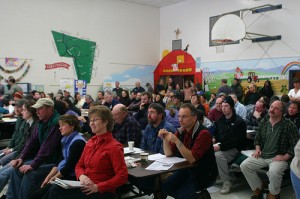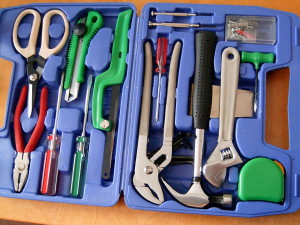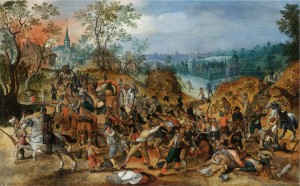What the Heck is Going On with Local Economic Development?
By The Economic Development Curmudgeon
State and local economic developers are my principal focus. I try to add value to this clientele by reviewing old classics and new books/research, culling out how they might benefit those of us who work in the trenches.
But, every so often I try to sneak in something different.
I’m amazed how little is written about what goes on at the state and local levels.
OK–there is the usual flood of blogs describing new policy issues, incredibly brilliant programs, and cutting-edge economic development strategies. But there is precious little about what it is like to work in sub-state economic development. Most of us work in a community or at the state level and our daily professional lives are a lot more complicated than simply “creating jobs/clusters”, “preparing knowledge-based workers” or “developing disruptive entrepreneurs”. There is seldom anyone who writes about how things get done locally and how a local economic developer can function effectively. That is what this issue is about.
We work within agencies, chambers and departments , are accountable to somebody, and must cope with their external world. Many of us feel isolated, yet we are constantly surrounded by a host of “relevant and significant others” with whom we collide and cooperate depending on the day of the week. Most of our time and effort, almost all of our sleepless nights, are spent trying to figure out how to deal with these dynamics, while serving our community’s needs and keeping our paycheck. They call this the world of policy implementation. But, like maintenance and infrastructure, policy implementation draws little, frankly no, attention from the powers-that-be who are fixated on making new policies and programs. No one offers a convention or workshop on grubbing around in the hinterlands operating a program, or carrying out someone else’s policy strategy.
Anyway, enough with the whining, pour yourself a bourbon, and let’s take a stab at putting some form into what it’s like to work in economic development at the local level. This issue will start at the beginning and try to put some context into how local agencies and program implementation fits into the overall scheme of things within the economic development profession. So we pose three introductory questions and try to develop a perspective, an order, or context. This is only meant to be the initial introduction of this topic–later issues will follow.
The three questions are: (1) Are all economic developers pretty much identical–that is do they think alike and do the same kinds of things? Answer: NO; (2) What are some of the more important dynamics of working at the state and local levels? Answer: we will list several, including something called “onionization”; (3) How does onionization shape our work and policy environment? Answer: A Lot!
In the Beginning was the World
First, not all economic developers think alike or do the same type of things.
Whoever you are, or wherever you work, you should not assume that all economic developers see economic development in the same way you do–they may, in fact, be intensely opposed to your version of economic development. Some economic developers may be your worst enemies. Broadly speaking there are two different ways to work in economic development–two “worlds” of economic development.
There is a “Policy” world and then there is a “Practitioner” world. A few (like myself) overlap both worlds–hybrids that fit in neither. But most of us work pretty exclusively in one or the other. Your resume determines which world you, the reader, belongs to. Each world approaches economic development in its distinctive way, with different values and even different goals. There is a distinctive mentality associated with each world. That mentality often reflects the different education, training and work experience prevalent in each world. All of these differences between the two worlds create what at times seems like a wall that separates us. Friends or not, we each approach economic development in our own style. I may be wrong, but I think neither world really understands the other.
Numerically, most of us are Practitioners. Most of us who work for an economic development organization in a state or community are Practitioners. Practitioners manage or implement programs, tools (revolving loan funds, for example). Many Practitioners work at the state and local level, but draw their paychecks, directly or indirectly, from the federal government (SBA EDA, HUD, MEP, NIST and WIA types, for example). At minimum they have to cope with faceless, faraway bureaucrats and go face-to-face with people in the community.
Practitioners tend to share one characteristic that distinguishes them from Policy World types–they are directly accountable to their communities for their efforts, programs, actions and initiatives. The Practitioner is the one left holding the bag. Things are personal in the Practitioner World. It matters if someone gets out of bed mad. In the Practitioner World some people are just plain nuts. Some leaders won’t lead, others are micro-managers, and others distracted, conflicted, or passive. Everybody has an agenda, or at least an angle. Things can change by the hour–or they never change. What goes on in the Practitioner World ain’t completely rational or predictable. For example, everything can change with an election.
Elections cause “silly seasons” (the period during an election when political candidates and the media say and do stuff that makes little sense). And then, after an election everything changes, even if it doesn’t.
Practitioners come from all sorts of background, education, occupations and past work experience. Often economic development is a way station to another job. Either that or they’re a civil servant who will be carried out of the office by the retirement director or the undertaker. The Practitioner World is full of forms, process, acronyms, and meetings. It is very process-oriented. A defining characteristic of a Practitioner is they are on the “firing line”. If Practitioners screw up, they get fired, yelled at, or their EDO loses some funding. They are in the room with the auditor; they make the appeal to the legislature; they conduct public hearings, and close deals. It’s the Practitioner’s name in the newspaper.
The Practitioner World is a “bottoms-up” world–the only thing that counts is what is within eyesight. The Practitioner works in the trenches. From the perspective of the Policy World, however, Practitioners work in the provinces and backwaters.
And now the Policy World.
If we work for a university, a think tank, a planning department, or research institute, it is quite likely we are full-fledged Policy World types. Policy-types deal with ideas, strategies, evaluation, and planning. A policy-type can draw her paycheck from a state or local government, but they are staff, apart from the programmatic firing line. The Policy World thinks great thoughts and write/talk in broad strokes. Some Policy World types work at local levels. Probably, most work at the national or state levels. Policy-types mostly look at economic development from a “top-down”, nation-wide, state-wide, system-wide perspective. Individual elements (your community, for example) are collapsed into a national average, or a metropolitan area median.
They talk about things the Practitioner cannot physically touch–like a cluster, or a brand, or an economic base, or GNP. They rage about issues that are cosmic and timeless (think competitiveness or inequality). They, and their analysis (because that is what they do), are not generally tied to a specific community or state. They use databases of fifty states and one hundred metropolitan areas. They use “indicators” and attach unrealistic meanings to them. To them correlation equals a fact; the numbers are what the numbers are. Their reference point is the Bureau of the Census or BLS, not the mayor’s or governor’s office.
Economic development for them is “rational”. You can control your fate through data analysis. They use theories, models, footnotes, talk about methodologies incessantly; they toss out “outliers”, and often write in math, tables and algorithms. Typically Policy World types work out of a specialized cloister, an academic discipline or department (economics, urban studies, policy analysis, school of business, institute). They do seldom reach outside to another cloister, which they typically regard as full of a Cro-Magnon fools. They write abstracts, not press releases. Typically, the policy type specializes in a specific set programs, skills, strategies, or tools (tax-exempt financing, e.g.). Anything outside their specialty may not be considered as economic development. They are educated, and they usually work in an “educational” environment, often have lifetime tenure. They spend their day sitting at a computer.
The point behind all this two worlds stuff is that no matter where you work in economic development there is a parallel universe where everything is the opposite. Your professional “friend” in the “other” world is likely to be your worst enemy. Should it be any surprise to anybody that the worlds do not define economic development in the same way. They pursue different goals and have a different frame of reference. Each talks a different language and someone very different than you signs their paycheck. One world is forever condemned to be parochial; the other is inherently fuzzy-minded and floating in the clouds. These two worlds exist. There’s nothing you can do to change it. So let’s start dealing with it productively.
Important Dynamics of Sub-State Economic Development
Next, I promised to list key dynamics of sub-state economic development. By dynamics I mean those “forces”and “drivers” that rock our local economic development boat. These dynamics are things we need to know and to appreciate if we want to be around for the next paycheck. The following are some that seem important to start out with. I have included a brief description of each with a brilliant insight or two. My intention is that in the future on a irregular basis I will return to this topic, pick out a couple of dynamics and figure them out.
- Structures Matter: It matters if you work for a Chamber, a state ED bureaucratic unit, a redevelopment agency, the mayor’s/city managers office, an SBA Small Business Center, the Workforce Investment Act Council, a tourist bureau, a non-profit, a division within a planning (or development) department, or a university center. God forbid you work for a regional agency because no one knows where these things belong. Each structure-type has different kind of leadership, different processes; they celebrate different holidays.
- Some organizational types are very visible–others labor on the sidelines unseen and usually unappreciated. Some are private sector (chambers); some are non-profit corporations; some are municipal departments. Some are civil service, some are unionized. Agency jurisdictions and service areas are all over the place. Each type lives in a different organizational system. Different structures do different things. Some make loans, sell bonds, run TIF programs, and others build buildings. Each has a different type of boss or sovereign. Each structure-type has its own procedures and hot-buttons, does some things and not others. To navigate your way around a local jurisdiction, you need to appreciate what each structure does, and for whom it does it.
The Sovereigns: Bosses matter–they make decisions in distinctive ways and have different priorities. Some EDOs have boards of directors, and how these fine folk get onto the board is story in itself. Most, thank god, you seldom will see; others skulk around in unpredictable ways. Department heads can be civil service or a member of the mayor’s “team”. Then there are something called “executive directors” or “presidents”. I was both–also something called a First Deputy Commissioner of Environment and Planning, and an Economic Development Coordinator for the County Executive. I was on fifty, I counted, boards of directors at some point in my career. Get the point? The point is that there are all types of bosses and an economic developer can mix and match through their career.
If you change the organizational type, the type of boss also changes. Leadership is organizational-type sensitive. So each of these “boss” or sovereign positions have different ways of doing things, different amounts and types of “power”, different types of staff/employees, and different financial/budget processes. Each organizational type makes decisions and policy according to which type of sovereign they have.
Boundaries Matter–Forget that reality and you are swimming in shark-filled waters. Boundaries are physical such as the “city limits”. There are also “policy or program” boundaries as well. Try starting a program that some other EDO believes is within their turf and see what happens.
The Policy World hates jurisdictional boundaries and service areas that seem without logic to an external observer. Having a boundary defines you as parochial because in the Policy World concepts, theories, ideologies and models do not have boundaries. The Policy World calls any economic development that occurs within a jurisdictional boundary “place-based economic development”–and that is not a compliment. In their world if a start up gets funding from one city and then moves to the next (or Silicon Valley) it’s no big deal. They will never understand tax abatement for many reasons, but fundamentally, to them, it does not matter where a relocating company relocates. Of course, it matters a heck of a lot to a jurisdictional-based economic developer and her sovereigns and community.
Boundaries do terrible things. They overlap, they duplicate and fragment–they create inefficiencies and false priorities. To escape boundaries, people in power often form a regional agency or have the state do the job. Neither is all they are cracked up to be–guess what–they have boundaries too–and sovereigns and structural process quirks. But in the Practitioner World, boundaries are fundamental; they define you and your program. Oh, BTW, boundaries are personal–violate an organizational boundary and be prepared to make personal enemies. After all, the boundary name is usually on the top of your paycheck.
The Distinction Between Tools, Programs, and Strategies–I tried to develop a formal definition for each of these terms and discovered that (1) the Policy World would puncture each definition, and (2) the Practitioner World wouldn’t care. So let’s use examples. Cluster is a strategy. Workforce Development, Entrepreneurism, Tourism are all strategies. Business Attraction is a strategy, as is Business Retention. So is Neighborhood (or CBD) Redevelopment.
The Policy World talks about goals and objectives coming from strategies which are derived from a “vision” or what the community wants–that is strategy-like. The strategy is the “why”, the theory, behind what we do. Strategies are found in economic development plans. Strategies using the same name often differ among cities and states. Strategies are often rhetorical in nature; they often are found in campaign speeches and party platforms, and annual reports.
- The tool, on the other hand, is essentially recognizable across the nation. A single tool can be used for many strategies, often simultaneously. The same tax abatement can be used for attraction or retention. A tool, usually, is included in a “program” which adds terms and conditions, defines eligibility, service area and other such administrative factors. Programs are the core unit of policy implementation. The dynamic mechanism of a program is the tool, the microprocessor of a program so to speak.
- So tools and program are how we carry out strategy. At this point, think back to the “Structures Matter” commentary and one can better understand how structures differ (they have different tools). Tools, programs and strategies just don’t float around–they are lodged in an EDO (economic development organization).
The same tools can be repackaged into different strategies. Let’s use as an example the physical redevelopment of a particular area of your city. In the old days urban renewal was a strategy that physically removed older “neighborhoods” and replacing them with modern “desirable neighborhoods” using tools such as eminent domain, bond-issuance, planning, and slum removal. The same strategy and tools could be renamed waterfront development, commercial revitalization, sports arena redevelopment, or “eds and meds” revitalization. A bit cynical perhaps, but that’s just the way it is.
To me the practice of economic development is mostly built around tools. Tools have been around forever. Clients and constituencies are forged around who benefits from tools. Practitioners build careers around tools and their personal expertise in fitting them to programs and strategies. Certain tools require, or would seem to require, certain training, education and occupational experience. National associations are based on tools. What tools an EDO commands arguably define its constituency, its expertise, and its visibility to the outside world. Strategy, on the other hand, is more volatile–changing with the next hot, sexy book, workshop or gubernatorial administration. New strategies just require rewriting the collateral material, renaming older programs with appropriate tweaks (modifying terms and conditions, marketing, reporting etc.)
At this point, let’s talk in detail about yet another dynamic found in each community economic development policy system. This dynamic relates to the obvious reality that every community, if you look closely, has a considerable number of organizations doing something they, at least, consider to be, in whole, or in part, economic development. Because over long periods of time each community experienced a bunch of economic development needs and problems it needed to be addressed, we find in the typical community a lot of economic development going on. Some observers call this fragmentation and duplication. I do not. Most of the time something much deeper is going on than simple fragmentation. I think, and please be patient with the silly label, there is a critically important dynamic I call onionization occurring. Let’s talk about onionization.
Onionization:
Ever seen the inside of an onion; of course you have.
It is sort of like a tree ring, except one can, for whatever weird reason, take apart an onion and reassemble the rings. Each onion ring has independent structural integrity. You can’t separate tree rings because the tree rings have no structural integrity. Tree rings fuse into wood, which except for the color forms a coherent tree trunk. The “onion”, however, requires all the individual rings to hold together to achieve coherence as an onion. Not to be silly, I am in fact serious, the onion is a wonderful metaphor for a federal government which is based on a dual sovereignty of individual states and the national government. The onion is a great metaphor to understand our community political system–the onion is much better than the tree ring.
Each onion ring is a separate, distinct, autonomous, independent economic development organization (EDO) that operates within your community. Each EDO stands on its own and does its own “thing”. All of the rings, each doing its own thing, responds to some economic development need or problem experienced by your community/jurisdiction. Together they form into a onion or a policy system. Onionization explains how (and why) all this complexity occurred and describes how the individual rings come together to form a coherent onion, or community policy system.
Each individual ring (EDO) forms to counter a problem a community experienced at one point in its history. Over time the problems accumulate and so do the EDOs. Not all problems go away, most do not. So many EDOs stick around for very long periods of time and the onion accumulates more rings and the community policy system gets larger. The older onion rings/EDOs, however, become encompassed by newer rings dealing with more contemporary problems. The older rings are submerged in the core and do their thing, largely unseen. The problems they are dealing with, however, continue, chronic and unsolvable. The onion functions through all this and resolves whatever issues the individual rings generate.
There is a county department, city departments,, tourist bureaus, chambers, workforce agencies, neighborhood and downtown organizations, non-profits linger about doing all sorts of things, the university of late has gotten involved, community college,then airport, port authority, redevelopment or community development agency, SBA, WIA, MEP, EDA, HUD, and regional marketing and one-stops. And by the way have you ever counted the state agencies and departments that offer some economic development program? There are a lot of onion rings in a typical community of say, 25,000-50,000. If you think Game of Thrones has a lot of characters (seven kingdoms, a hundred characters), look inside the typical community.
Here’s the thing that outsiders don’t appreciate.Each onion ring (EDO) has its own history, its own place in the community, its own constituencies and clients, its legislative friends and opponents. Each EDO has its own sovereign, funding streams, budgets, strategies, programs, and tools and organizational type. It has structural integrity that has lasted.
An obvious consequence of onionization is that a lot of Practitioner time is spent managing the interactions within and among EDOs. These interactions arise from many factors, but the single most important generator or EDO interaction is that each EDO implements a strategy (s), set of programs, and tools. Policy people call this program implementation–it is the core of what every EDO does for a living. The “Thing” about this program implementation stuff is that it involves management, coordination, overlapping and conflicting constituencies/service districts/levels of government. There are several issues that arise in policy implementation but the one I wish to talk about here is that the Policy World doesn’t do program implementation–it’s not in their job description (it should be, however). Policy World models, framework and projections usually grossly simplify implementation or ignore it completely. That is a major league barrier between the two worlds and can set them at war with each other.
The Policy World tends to view policy and programs from a “plug and play” perspective–and if the implementation goes wrong, then the fault lies with the implementer, not with the policy itself. Policies, however, are seldom, if ever, designed to make their implementation easier or more effective. To the Practitioner a policy designed by the Policy World often works like a TV remote control–try to find the mute button quickly–it is the smallest and most inconveniently placed button on the control.
Finally, the inside of an onion is all neat and pretty; it didn’t get that way by accident. There is an order inherent within an onion. Some dynamic creates that order and that has to be part of onionization. I think bureaucratic and political “power” put order into the community-level economic development policy system. The power of sovereigns? Yes, but also the power relationships among EDOs.
Each EDO possesses some amount of “power”–usually bureaucratic power. Bureaucratic power establishes your EDO’s placement within the onion. Without the proper use of bureaucratic power your onion ring could lose its structural integrity or vice versa, someone else could lose it to your EDO. Not everybody plays nicely in the community sandbox! Typically, each community policy system has a designated multi-function lead agency–that is where one might start to see how bureaucratic power operates. Onionization can explain a lot that goes on in an economic developer’s daily life. In this review, however, I want to concentrate on how onionization creates individual onion rings.
Onionization acknowledges the variety of EDOs found in nearly every American community.
Two forces are at work that manufacture what appears to be an ad hoc melange of EDOs operating in every community.
First, the obvious; administration of programs usually requires specialization by task, function, purpose or geography. For example, I have to write a review each month. That review is broken down in to paragraphs and sections each with a theme or a thought. If it were not broken down it would be unreadable. That is what we do with our agencies and our own individual jobs; we break them down into some coherent element of the task. Simplistically, each EDO is a paragraph or section. This breakdown of the overall community economic development task has happened because over the last hundred years or so the community has encountered a host of different problems and formed an EDO with the right combination of expertise and powers to deal with it. The problem never went away and neither did the EDO.
Take the example of a port authority which first was tasked to manage the critical waterfront. It did the job–and so it was given another task–manage the airport. And so on. So, what used to be a primary EDO over a half-century morphed into a transportation agency with some pretty important economic development consequences. It still does economic development; close the airport or shut down the container port (hear that Long Beach) and see how well the economic base appreciates it. But, economic developers (and most port authority staff) often don’t think of these behemoths as “like them”.and it is incomplete, is decentralization and specialization. Chambers of commerce before World War II were the most important economic development agency in most communities. Then came urban renewal to rebuild old obsolete infrastructure and central business district. Chambers don’t tear down buildings–but redevelopment agencies do. And then deindustrialization hit our manufacturing firms and business retention, local financing programs etc started up another set of EDOs. The Great Society came along and community development and neighborhood development organizations followed. CBDs declined and Main Street and BIDs came along. No where have I mentioned business attraction and recruitment, or clusters and all the other good stuff floating around. This historical evolution is always further compounded by the reality that any of the three levels of government can step to the plate–making your community economic development system an intergovernmental morass.
You get the picture. This is not duplication. This is specialization necessary to solve a particular and chronic problem or issue by creating an EDO with the right set of skills, powers, tools, governance and programs.
Conclusion
So what is it the state and local economic developer should get from this onionization dynamic. First, there may be twenty EDOs functioning in some way within your community, but each one of them sees and defines economic development through the prism of what it is they and their EDO does. If your programs do not interface or overlap with theirs, you are not likely to be on their radar. Secondly, there are EDOs in your community that do not consider themselves as an EDO per se. They may, however, play an important role in economic development (I am thinking about transportation authorities, workforce non-profits, and tourism/convention bureaus), but they now live in their own little world, speak their own jargon, and quite likely don’t think you or they have anything in common. Thirdly, a lot of EDOs operating in your community are “federally-driven” EDOs who dance to federal music and do not sing any local tunes. That can easily occur with state EDOs operating in your community as well. Fourthly, trying to forge an coherent onion from these diverse independent onion rings is easier said than done. With different missions, constituencies, governance, strategies, and even definitions of what economic development is supposed to accomplish, it is not easily apparent what motivation or reason would draw this melange together–especially when the free beer and wine runs out. If everybody was to get into a room, the dynamics would resemble the Congress of Vienna or the current USA-Iran nuclear weapons treaty.
From the city, or community perspective, it is clear that a ton of ill-coordinated “stuff”, sometimes defined as economic development and sometimes not, is going on–but it is not clear not only that the results are so diffused that no only is meaningful change unlikely, but few outside the economic development “community” even knows it is going on. While it may be unclear what can come out of a redevelopment agency, tourist bureau, workforce program and chamber of commerce getting together, it is not unreasonable that intelligent people could forge a worthwhile agenda and see what follows. In short, if there were a way, a limited, incremental agenda helpful to the community/city’s need could be worked out.
For Policy Worlders, too often the horde of community-level EDOs is dismissed as parochial feudalism on steroids. Labeled as “fragmentation”, it is assumed to be inherently bad, inefficient, waste of limited resources, and inevitably duplicative. Cleaning up the barn must occur before anything good can happen. I reject these perceptions and reactions. Our multi-EDO community system is inherently and inevitably fragmented; that is part of the community policy system and so stop fighting it.
Cities develop EDOs over time to handle chronic problems or perceived needs. Also,keep in mind the possibility that different approaches to a problem can require more than one EDO to deal with it. Automatic consolidation of EDOs into one conglomerate EDO has not proven to be a consistent recipe for effective program implementation. The federal cabinet agencies are testimony to that. Please accept that sub-state EDOs usually do different things for different constituencies or attempt to accomplish different goals, strategies than other EDOs. They are not inherently inefficient. Anyway most EDOs couldn’t be merged no matter how hard one tries (levels of government, service areas, working in each other’s constituency/program turf, for example). These forces behind our onionization are natural, and on the whole, inevitable dynamics.
If so, instead of just defining/designing a policy using the typical methodologies, include the reality that a policy or program design has to be implemented and that implementation varies community by community in line with its policy system configuration and composition. Policy needs to be customized if it is likely to work–and customization involves working with the community itself. Generalized, academic methodological tomes designed as “one size fits all” solution to a goal or problem that you define alone in a room will solve little in the Practitioner World. It won’t be read by anybody relevant.
And that’s enough preaching for this month.
Before saying good-bye for the month, please keep in mind that each of the characteristics listed in the second section can be discussed at greater length. broken down and analyzed more intelligently than these brief introductory descriptions. Each characteristic contains dimensions that have not been mentioned thus far. From time to time over the remainder of the year, I will add more blather to this community policy stew, the so-called primeval soup, and see how it tastes. Together we can better understand how a community makes economic development policy, implements it, and then we can close the gap between the Two Worlds of Economic Development. Hope you join with me.











Comments
I do not know where I fit into this categorization. I work alone under the name of ProsperityForRI.com, which is my blog. Sometimes I think I am a writer, writing about why economic development does not work very well in my community, but I am also in the trenches, attending tons of hearings, influencing policy makers, and helping to create new industries in my community (compost).
Most of my work really focuses on helping the developers, private and public, understand that their plans are totally unrealistic and that their ideas ar3e based on an economy that no longer exists. All of their work assumes that if we get the business climate right we can have an economic growth rate over 3%. I constantly remind them that Rhode Island, as an old industrial place with limited natural resources is going to have a growth rate below the national average, probably in the 2% range in a good year, and that our growth rate has nothing to do with our business climate. The materials I read from C2ER are an important part of my understanding of the economy and how that relates to my community. I think everyone should read the Kansas Inc study that showed that business climates have a miniscule effect on the economy, but the people who think up the crazy economic development policies in Rhode Island think that fast growth is just around the corner if we could only get rid of the poor and let the rich do whatever they want. of course they have thought this for 50 years and have been wrong forever.
I would like to see more from you on how communities ought to be much more honest about the slowing of global growth and where their community fits into this, but the politicians are completely in denial about what growth rates are possible. And always seduced by what the Chamber of Commerce and the Koch brothers tell them they could have if they would cut taxes and throw more inner city kids out of school.
Comment by Greg Gerritt on March 17, 2015 at 4:53 pm
Trackbacks
The comments are closed.